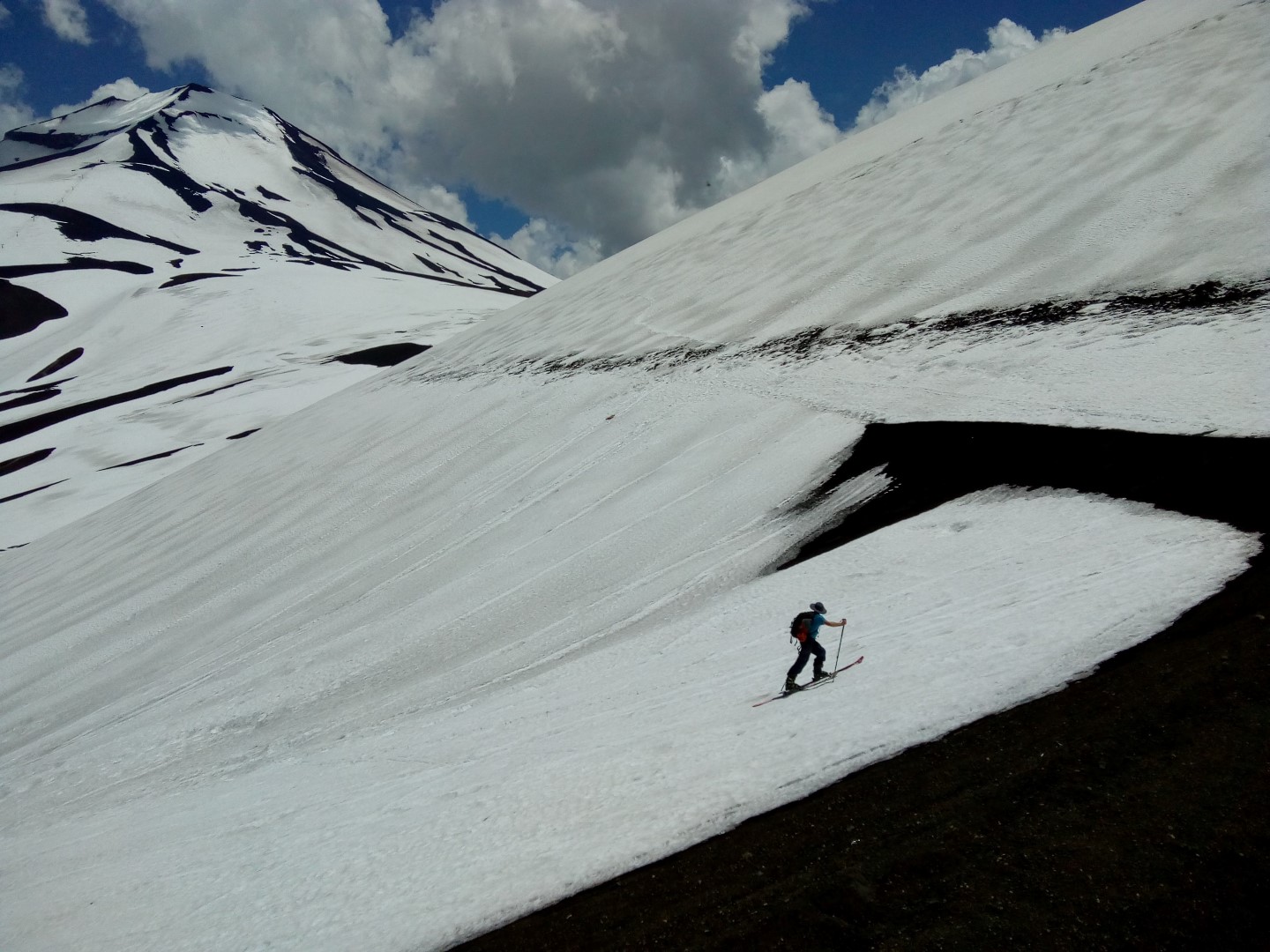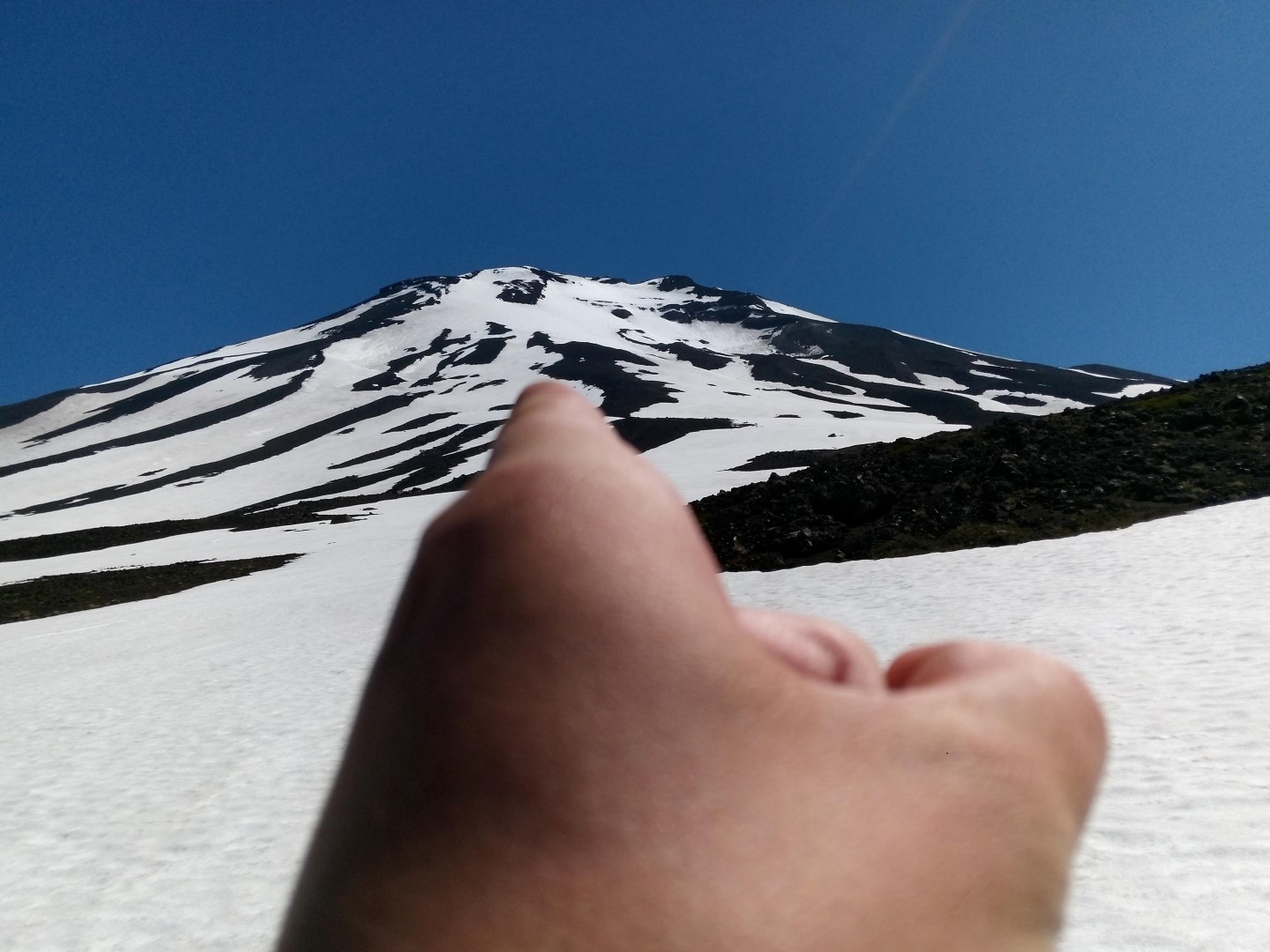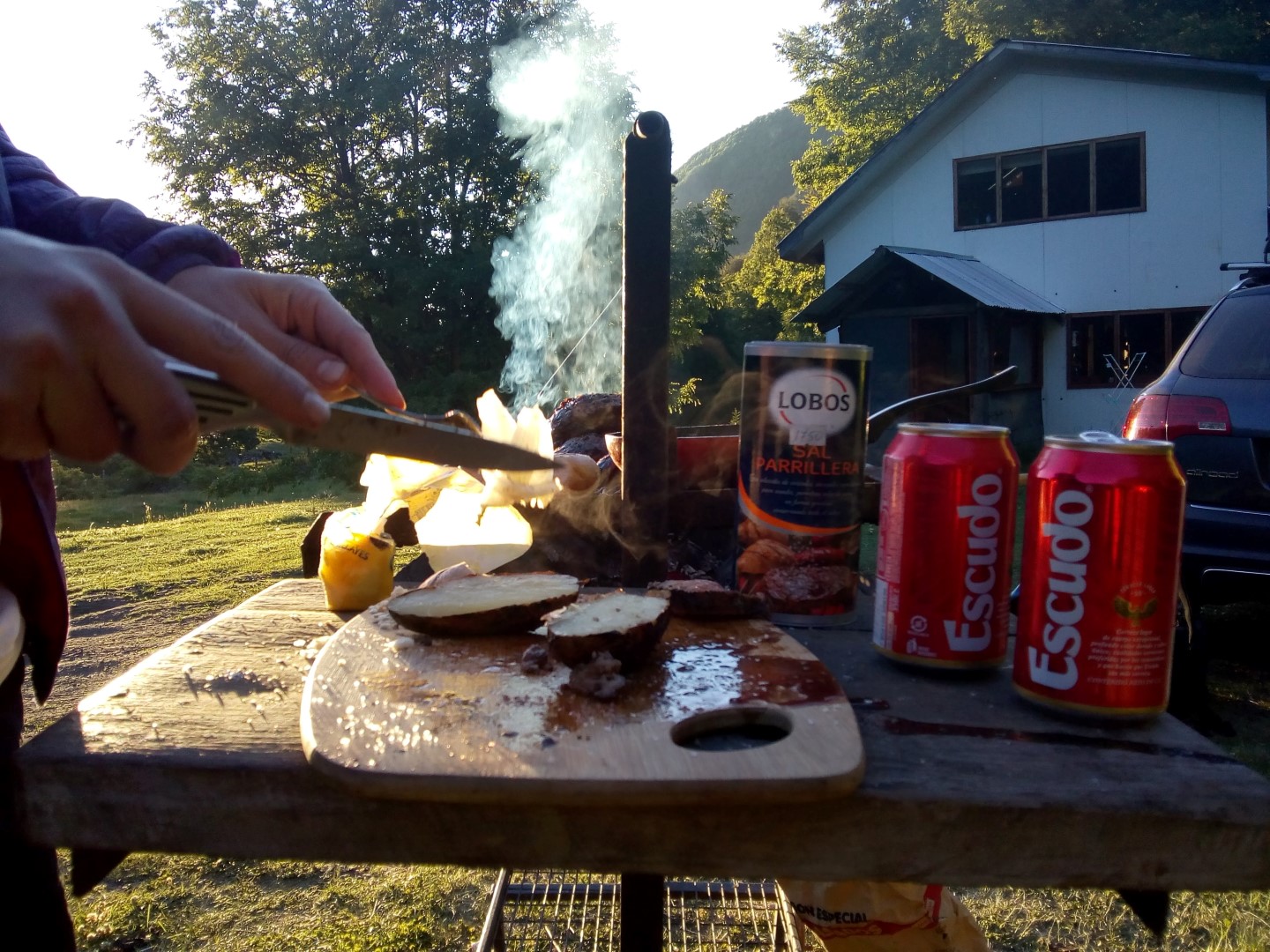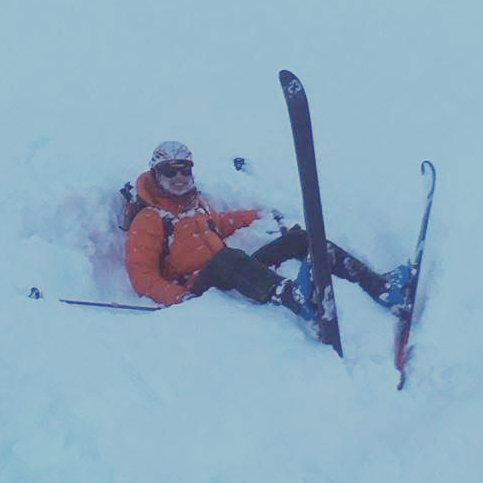Late Spring Skiing in the Araucanía Andina: Is It Possible?
For those with an insufferable ski addiction, the volcanoes of the Araucanía Andina offer a great choice for a hit of summer and adventure. Read on to have the whole scoop on when, where and why to seek late spring/early summer turns.
After passing the bar exam in late November of 2017, I figured there was no better way of celebrating than by heading south for an early summer ski expedition. I had been told by friends that it had been a cold and long winter with lots of snow in Malalcahuello, and that skiing was still in. This was enough to convince us to embark on a two week road trip, where we intended to ski as many volcanoes as possible.

Runnels, suncups and corn on the north face of Llaima. The wind is a major ally during the late spring and early summer. December 2017.
Unlike the mountains near Santiago, where the season usually lasts until late October, great turns are possible in the Volcanoes surrounding Malalcahuello until December. Most Chilean skiers quit skiing during October, which means less crowds and more freedom in the hills, allowing not only for great turns, but also for other summer activities like mountain biking, kayaking and climbing. The mountains surrounding Malalcahuello become lush and green, and the town covered in lupines which bloom during November.

Get used to longer bootpacks. Instead of having volcanic ash grinding away at the soles of your boots, carry a pair of decent approach shoes. December 2017.
Late season turns also require some additional work. Not only will you have to overcome the damming comments made by colleagues, friends and family that skiing is over in the southern hemisphere, but also dealing with early starts, boiling temperatures hot enough to melt your shorts, bastardly insects, longer approaches and finally, poor weather. Temperatures during november tend to hover over 20° C in the valley, meaning two things:
1) If its cloudy overnight, chances are there was no melt-freeze cycle, meaning manky turns down a slurpy-free-for-all: and
2) If the sky was indeed clear overnight, the corn window lies usually between 930-1030 AM.

Returning from a late December ski, overlooking the east face of Lonquimay. December 2017.
November and December may hold special surprises. The weather is more stable than during the winter, and summer powder turns are indeed possible, if of course, one nails the timing on the descent. However, warmer temperatures also mean higher freezing levels, so keep an eye out on the forecast to make the right call. Snow conditions vary from sun cups and runnels, to corn and sometimes powder. For our trip, we had great weather during the first week. The rain clouds rolled in during our second week, and even if we could not ski so much, we still managed to sneak some great rain skiing in as well.

Sometimes, one is blessed to ski powder during the late spring. South face Lonquimay, November 2020.
Now, skiing late in the season also has many other benefits. Not only is lodging and dining cheaper during the late spring and early summer, but the locals also friendlier, and, as we said previously, one can easily have a mixed bike-climb-ski adventure. And of course, dinner bragging rights. We were on the cheap, so we crashed with friends or camped out.

The author enjoyining some corn on the north face of Llaima, after a grueling legal habilitation exam. December 2017.
To be brief, early summer turns are a great adventure to be had in the mountains of the Araucanía Andina. Snow coverage varies year to year, but rest assured, November is a prime month for touring and ski mountaineering in the mountains of Southern Chile.
Just keep an eye on the forecast.

If the skiing isn’t so good, just lay back and have an asado.




